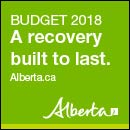- News Front Page
- Uncategorized
- Headline News
- Filipino Calgarian
- Business
- Pinoy Stories
- Community News
- Publisher's Note
- The Main Ingredient
- Views and Opinions
- Maikling Kwento
- Alberta News
- OFW – Month
- Travel News
- Health and Lifestyle
- Pinoy Toons
- Pinoy Spirit
- Entertainment
- The Philippine Lawyer
- Horoscope
- Greetings
- About Us
- Greetings From the Prime Minister
- Greetings from the President of the Philippines
- Greetings from the Premier of Alberta
- Greetings from the Mayor of Calgary
- Advertise With Us
- Disclaimer
- Subscription
Publisher's Note
- Publisher’s Note
 It was 22 years ago when I arrived in Canada and chose Calgary, Alberta to be my home. Leaving my family and friends behind, it was a new adventure for me to be in a new country without knowing anyone. That was the time I looked for a Filipino community paper and never found any, [...]
It was 22 years ago when I arrived in Canada and chose Calgary, Alberta to be my home. Leaving my family and friends behind, it was a new adventure for me to be in a new country without knowing anyone. That was the time I looked for a Filipino community paper and never found any, [...]
Visitors to Pinoytimes
Page added on December 22, 2013
LABEL READING THE HEALTHY WAY
Using Food Labels
Food labels give you information to help you make healthy food choices and compare similar foods. Nutrition information is found in three different places on food labels:
1. Ingredient list
2. Nutrition Facts table
3. Nutrient content claims and health claims
You can use food labels to make healthier food choices. Healthy food choices will help to improve your overall health. It also helps you manage conditions such as diabetes, high blood pressure, high cholesterol, and food allergies.
It is the law that most foods have a label. Some foods that don’t need a label are:
- Fresh vegetables and fruit
- Raw meat, poultry (ground meat and ground poultry must have labels)
- Raw fish and seafood
- Pre-packaged meat and poultry that are barbecued, roasted, or broiled in the store
- Baked foods made in the store
- Alcoholic drinks
- Bulk foods
- Foods sold at farmers markets and craft shows, when sold by the person who made them
- Individual portions of food not for re-sale (including ketchup packets, coffee creamers)
Ingredient List
Look for ingredient lists on food packages. The ingredient list tells you what is in the food. Ingredients are listed by weight from most to least. The first few ingredients are those in the highest amounts. Reading ingredient lists is important for people with food allergies. It is also useful for people who avoid or limit certain ingredients.
Nutrition Facts table
The Nutrition Facts table gives you information on serving size, calories, and at least 13 different nutrients. Use the Nutrition Facts table to compare similar foods.
Choose foods that are:
- Higher in fibre, vitamins, calcium, and iron
- Lower in sugar, salt, and fat
A note on serving size:
The serving size listed in the Nutrition Facts table is the amount of food that is often eaten at one time. The serving size in the table is not always the same as the serving sizes in Canada’s Food Guide.
Follow the guidelines from Canada’s Food Guide to choose the amount and type of food needed for your age and gender.
Reading the Nutrition Facts table
Below is a sample Nutrition Facts table for a blueberry muffin. Look at the information in the table as you read the information beside it.
Serving size is listed at the top of the Nutrition Facts table. All the information in the table is based on this serving size. If you eat more or less than the listed serving size, you need to adjust the nutrient amounts listed. For example, if you ate half of this blueberry muffin you would need to divide all the nutrient amounts in half.
Calories are the amount of energy in one serving.
Fat is the total amount of fat in one serving.
Saturated and trans fats are part of the total amount of fat. These fats raise your blood cholesterol. Choose foods that are lower in saturated and trans fats.
Cholesterol is the amount of dietary cholesterol in one serving. A food may have no cholesterol but sill be high in saturated and trans fat.
Sodium is the amount of sodium in one serving. Salt is made from sodium. Look for foods with less than 200 mg of sodium in individual items.
Carbohydrate is the total amount of fibre, sugar and starch in one serving. Often the amount of starch is not listed, but it always counts as part of the carbohydrate total.
Fibre is the amount of fibre in one serving. Fibre is helpful for bowel health and can lower your risk of certain diseases. Choose foods that are higher in fibre.
Sugars may be naturally present or added to food during processing. Read the ingredient list to see if sugar was added. Limit how much added sugar you eat. See the last page for more information about added sugars.
% Daily Value can be used to see if a food has a little or a lot of a nutrient in one serving of the food.
Quick guide to % Daily Value:
- 5% or less is a little.
- 15% or more is a lot.
- Choose foods with less fat, saturated and trans fat, and sodium.
- Choose foods with more fibre, vitamins, calcium, and iron.
Nutrient Content and Health Claims
Nutrient content claims are statements made on a food package about one nutrient such as fat, salt, sodium, or fibre (for example: “A very high source of fibre.”)
Health claims describe a link between what you eat and certain diseases (for example: “A healthy diet low in saturated and trans fats may reduce the risk of heart diseases.”).
A food must meet government standards before it can display a nutrient content claim or a health claim.
What do nutrient content claims mean?
Below are some common nutrient content claims you may see on food packages.
|
Free: The amount of the nutrient in the product is so small that it is not counted:
|
|
No sugar added or with no sugar or unsweetened: No sugar is added, and no sugar-containing foods are added. May contain natural sugars (for example: fruit juice). |
|
No salt added or unsalted: No salt is added, and none of the ingredients have very much salt. |
|
Low: Product has a very small amount of the nutrient:
|
|
Lower or reduced: At least 25% less of a nutrient compared with a similar product. May be used for products that are reduced in calories, sugar, fat, saturated fat, trans fat, cholesterol, and sodium. Light or lite: Usually means “reduced in fat” or “reduced in calories”. May also mean lighter in colour, texture, or flavour. The label must say what is “light” about the food. |
|
Source: Product has a large amount of the nutrient:
|
Always check the Nutrition Facts table when there is a claim on the package. A food may be lower in one nutrient, but higher in another. For example, the Nutrition Facts table can show you if a food marked “low fat” is still high in calories. To learn more about nutrient content claims, visit: www.inspection.gc.ca/english/fssa/labeti/guide/tab7e.shtml.
Using food labels
Whole grains
- Look at the ingredient list. Phrases like “enriched wheat flour”, “multi-grain”, or “12-grain” may not mean the food is whole grain.
- For wheat products look for “whole grain whole wheat”.
- For grains like rye and barley, look for “whole” or “whole grain”, and then the name of the grain (for example: whole or hulled barley, or whole grain rye).
- Most other grains are always used as whole grains. These don’t need the words “whole” or “whole grain” in front of the name. For example, oats or oatmeal, bulgur, millet, cornmeal.
Salt (sodium)
Most Canadians need to lower the amount of sodium they eat by at least half. Sodium is found in salt. Most of the sodium we eat comes from processed food.
To eat less sodium:
- Choose fewer processed and packaged foods.
- Look for unsalted, low fat, and no-added salt foods.
- Compare brands. Choose foods with lower amounts of sodium in the Nutrition Facts table.
- Read ingredient lists on packages. Avoid foods with salt, sodium, or soda in the first 3 ingredients.
- Limit sodium to less than 2300mg sodium per day. The closer you can get to 1500mg is better.
Fats
Eating small amounts of healthy unsaturated fat can lower your risk of heart diseases. Healthy fats include canola oil, olive oil, sunflower oil, non-hydrogenated margarine, nuts, and seeds.
To choose a healthy margarine, look for “non-hydrogenated” on the label. Limit or avoid saturated and trans fats. Eating too much saturated and trans fat will increase your risk of heart disease.
Read ingredient lists to avoid foods that have shortening, hard margarine, butter, partially hydrogenated oils, lard, or coconut oil
Look at the Nutrition Facts table. Choose foods with a lower % Daily Value for saturated and trans fat.
| Fat facts
Hydrogenation is a process that is used to change liquid oil into solid fat. Trans fat can be formed during hydrogenation. It is best to avoid products that have hydrogenated fats. |
Added sugars
Choose foods with little or no added sugar. Look at the ingredient list on packaged foods. The words below mean that sugar has been added:
- Sugar, sucrose · dextrin
- Liquid sugar · glucose
- Invert sugar · fructose
- Corn syrup · honey
- High fructose corn syrup · concentrated fruit juice
To learn more, contact your doctor or speak to a nurse 24 hours a day, seven days a week by calling: Alberta Health Link toll free at 1-866-408-LINK (5465). Mandarin Health Link Calgary at 403-943-1554, Cantonese Health Link Calgary at 403-943-1556
Source: Healthy Holiday Eating, Developed by Registered Dietitians, Nutrition Services, Alberta Health Services.
RELATED STORIES
LATEST HEADLINES
- ISKWELAHANG PILIPINO (IP) RONDALLA OF BOSTON WINS THE HEARTS OF CALGARIANS
- Pinay doctor joins Medicus Family Clinic and Pharmacy
- Multicultural Ethnic Media round table with Minister of Finance Joe Ceci together with Minister of Social Services Irfan Sabir
- Trans Mountain Pipeline keeps Canada working
- Facilitating travel to Canada while keeping Canadians safe
COMMUNITY NEWS
 A new way forward for some immigration application processing times
A new way forward for some immigration application processing times Calgary Stampede 2018 Poster
Calgary Stampede 2018 Poster Alberta celebrates first Philippine Heritage Month
Alberta celebrates first Philippine Heritage Month UPAAA Welcomes New Philippine Consul General
UPAAA Welcomes New Philippine Consul GeneralPINOY STORIES
 Duterte signs National ID System Act
Duterte signs National ID System Act- Holy Week practices in the Philippines
PINOY SPIRIT
HAVE YOUR SAY
Lorem ipsum dolor sit amet, consectetur adipiscing elit, dolor sit ipsum.PROMOTIONAL BLOCK
Lorem ipsum dolor sit amet, consectetur adipiscing elit, dolor sit ipsum.TRAVEL NEWS
PINOY TOONS
Tags
Archives

















